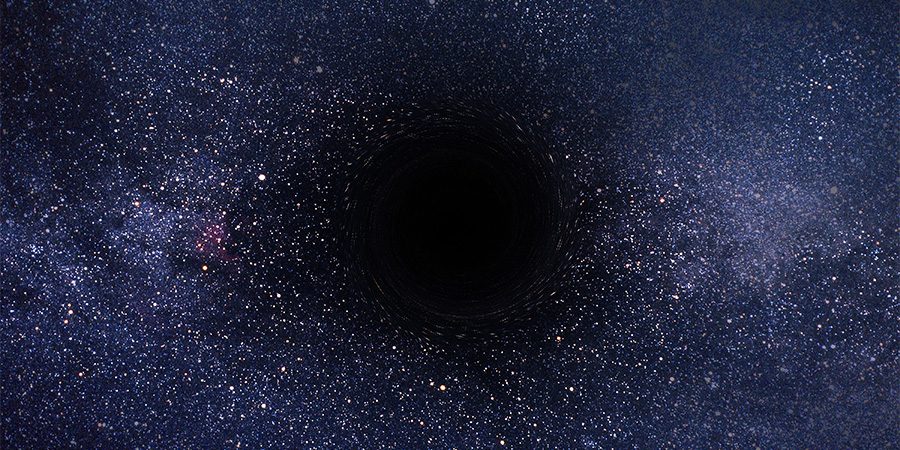In this article, we’ll look at the discovery of a runaway black hole that’s creating a spectacular trail of new stars in its wake, a never-before-seen phenomenon captured by NASA’s Hubble Space Telescope.
Key Takeaways:
- The black hole is as massive as 20 million suns.
- The trail consists of 200,000 newborn stars.
- The discovery was made accidentally by the Hubble Space Telescope.
- The black hole was likely formed from a chaotic intergalactic billiards game involving three massive black holes.
A Trailblazing Black Hole: Venturing into the Cosmos’ Dark Recesses
Astronomers have recently stumbled upon a groundbreaking discovery: a black hole that is blazing a trail through the cosmos, defying what we knew about these mysterious celestial entities.
This enigmatic black hole, located in a distant galaxy, is giving scientists a rare glimpse into the inner workings of the universe’s most elusive phenomena.
As it traverses the cosmos, it is shedding light on the formation and evolution of black holes, paving the way for future exploration and understanding.
Hubble’s Serendipitous Discovery: A Fortuitous Find in the Depths of Space
The discovery of this trailblazing black hole came about through sheer serendipity.
The Hubble Space Telescope, while conducting routine observations of distant galaxies, detected unusual activity in one particular region.
Intrigued, astronomers quickly refocused the telescope, and their efforts were rewarded with a front-row seat to this remarkable cosmic event.
At first glance, it appeared that a massive star had met its demise, collapsing under its own gravitational pull to create a black hole.
However, upon further analysis, it became evident that this was no ordinary black hole.
Rather, this celestial entity was moving at incredible speeds, tearing through the galaxy and leaving a trail of destruction in its wake.
Unraveling the Cosmic Mystery: Deciphering the Enigma of a Trailblazing Black Hole
The discovery of this trailblazing black hole has left astronomers scrambling to understand its unique behavior.
Traditional black holes remain stationary, anchored to the heart of a galaxy by the immense gravitational forces that govern them.
This peculiar entity, however, appears to defy these conventions, blazing its own path through the cosmos.
After intense study, researchers have hypothesized that this black hole’s unusual behavior could be due to the aftermath of a violent galactic collision.
As two galaxies merged, the resulting gravitational chaos would have propelled the black hole on its current trajectory, setting it on a course through the galaxy at breakneck speeds.
This revelation has broad implications for our understanding of black holes and their role in the universe.
It suggests that these enigmatic phenomena may not be as static and unchanging as once believed, but rather that they can experience dynamic shifts over time.
Moreover, the trailblazing black hole’s path provides invaluable insights into the formation and evolution of galaxies, offering a rare glimpse into the cosmic ballet that shapes the universe.
The Future of Black Hole Exploration: Charting New Frontiers in the Cosmos
The serendipitous discovery of this trailblazing black hole has opened up new avenues for scientific exploration and ignited a renewed interest in these mysterious celestial entities.
As researchers continue to unravel the secrets of this enigmatic phenomenon, they are uncovering valuable clues about the nature of black holes and their impact on the universe at large.
In the coming years, new telescopes and observational technologies will come online, enabling scientists to probe the depths of space with unprecedented precision.
These tools will allow astronomers to delve deeper into the world of black holes, exploring their behavior, origins, and impact on the cosmos.
As we continue to push the boundaries of our understanding, we stand on the cusp of a new era in black hole exploration.
The trailblazing black hole has shown us that these celestial phenomena are far more complex and dynamic than we ever imagined.
The discoveries we make today will not only reshape our understanding of the universe but also lay the foundation for future generations to explore the enigmatic depths of the cosmos.
Conclusion
This accidental discovery by the Hubble Space Telescope has opened a new window into the behavior of black holes, revealing that they can leave behind a trail of newborn stars.
As scientists continue to explore the universe, the upcoming Nancy Grace Roman Space Telescope could potentially unveil more of these star-forming runaways, offering further insights into the enigmatic nature of black holes and the birth of stars.
 Sections of this topic
Sections of this topic
















